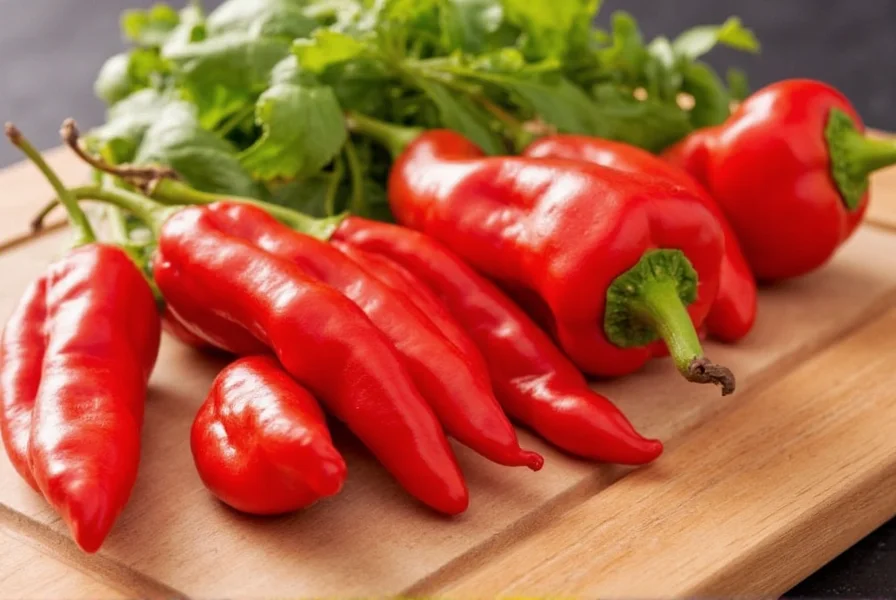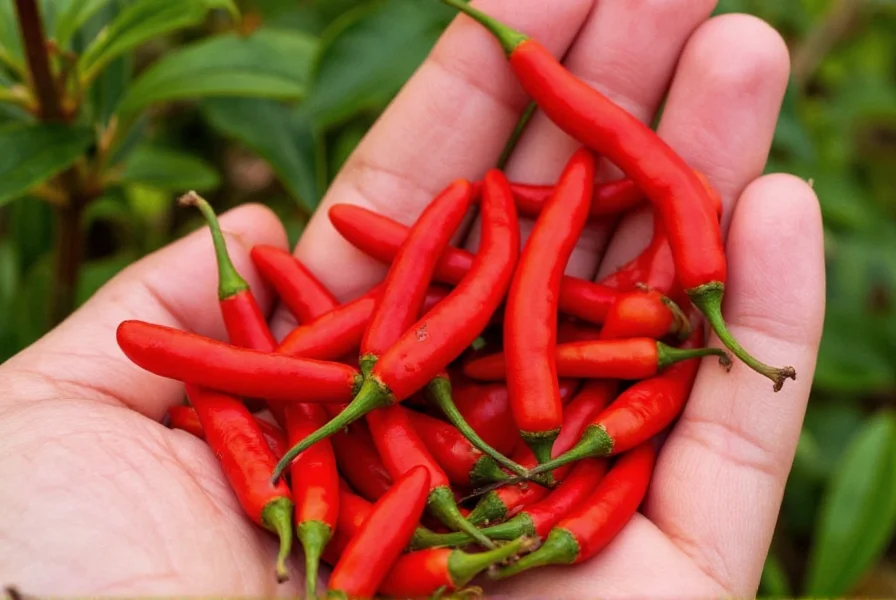Small hot chilli peppers are tiny but mighty fruits packed with intense heat and flavor, commonly used in global cuisines. These peppers, ranging from bird's eye to pequin varieties, deliver powerful spice in small packages. Understanding their heat levels, safe usage, and culinary applications can transform your cooking while unlocking health benefits like boosted metabolism and heart health.
| Pepper Type | Scoville Heat Units (SHU) | Flavor Profile | Best Culinary Uses |
|---|---|---|---|
| Bird's Eye Chili | 50,000–100,000 | Grassy, floral, citrusy | Thai curries, stir-fries, hot sauces |
| Pequin Pepper | 40,000–60,000 | Nutty, smoky, fruity | Mexican salsas, oil infusions, dry rubs |
| Cayenne (small varieties) | 30,000–50,000 | Sharp, bright, slightly sweet | Spice blends, soups, marinades |
| Fresno Chili | 2,500–10,000 | Sweet, mild initial bite, smoky finish | Salsas, grilling, garnishes |
| Habanero (small variants) | 100,000–350,000 | Fruity, floral, intense heat | Caribbean jerk seasoning, hot sauces |
Why Small Chillis Pack More Heat
The intense heat in small chilli peppers comes from capsaicin, concentrated in the white membranes and seeds. Smaller peppers have a higher seed-to-flesh ratio, making them significantly hotter than larger varieties. For example, a single bird's eye chili (50,000–100,000 SHU) is 5–10x hotter than a jalapeño (2,500–8,000 SHU).
Pro Tip:
Always wear gloves when handling super-hot chillis. Capsaicin can cause severe skin irritation and burns that last for hours. If you accidentally touch your eyes, rinse immediately with milk or vegetable oil—not water.
Mastering Small Chilli Cooking Techniques
Use these expert techniques to harness the full potential of small chilli peppers:
- Dry roasting: Toast whole chillis in a dry pan for 1–2 minutes to enhance smoky depth before grinding into powder
- Infusing oils: Gently heat chillis in neutral oil (like avocado or grapeseed) for 10 minutes to create versatile spicy oils
- Timing matters: Add chillis early for mellowed heat in stews, or at the end for bright, punchy spice in fresh salsas
- Balance with dairy: Yogurt, sour cream, or coconut milk neutralizes capsaicin for those sensitive to heat

Proven Health Benefits of Small Chilli Peppers
Research shows small chilli peppers offer significant health advantages when consumed in moderation:
- Metabolism boost: Capsaicin increases thermogenesis by up to 5% according to Journal of Nutritional Science studies
- Heart health: Regular consumption linked to reduced LDL cholesterol and improved blood circulation (American Heart Association)
- Vitamin C powerhouse: Contains 3x more vitamin C per ounce than oranges, supporting immune function
- Anti-inflammatory properties: Capsaicin reduces inflammation markers linked to chronic diseases
Science Note:
Contrary to myth, capsaicin doesn't damage your digestive tract. Instead, it stimulates blood flow to the stomach lining, potentially reducing ulcer risk.
Expert Buying & Storage Guide
Fresh Chillies: Look for firm, glossy skins with no wrinkles. Store in a sealed container in the crisper drawer for up to 2 weeks. For longer storage, freeze whole on a baking sheet before transferring to freezer bags.
Dried Chillies: Should be pliable, not brittle. Store in airtight containers away from light. Rehydrate by soaking in hot water for 15 minutes before use.
Oil Infusions: Homemade chilli oil lasts 1–2 months refrigerated. Always use sterilized jars and high-smoke-point oils like avocado or grapeseed.

FAQ: Small Chilli Pepper Expertise
Can I eat small hot chilli peppers raw?
Yes! Many varieties like Fresno or cayenne are commonly eaten raw in salsas and salads. However, super-hot varieties like habanero should be used sparingly raw due to extreme heat intensity. Always remove seeds and membranes for milder raw consumption.
Why are some small chillis hotter than others?
Heat levels depend on capsaicin concentration, which varies by genetics and growing conditions. Factors like soil pH, sunlight exposure, and water stress increase capsaicin production. For example, bird's eye chillis grown in Thailand typically have higher heat than those grown in cooler climates.
How do I reduce heat in a dish that's too spicy?
Use dairy products (yogurt, sour cream), sugar, or acidic ingredients (lime juice, vinegar) to neutralize capsaicin. Adding starchy ingredients like potatoes or rice also helps absorb excess heat. Remember: water will spread the burn—never use it for relief.
What's the safest way to handle super-hot chillis?
Wear food-safe gloves when cutting. Avoid touching your face, especially eyes. If skin irritation occurs, wash with soap and cool water, then apply vegetable oil to dissolve capsaicin. Always clean surfaces thoroughly after preparation.
Do small chilli peppers have more health benefits than large ones?
Yes! Due to their higher seed-to-flesh ratio, small chillis contain more concentrated capsaicin and nutrients per gram. For example, bird's eye chillis have 2x the vitamin C content of larger jalapeños by weight, making them more efficient for health benefits.
Conclusion: Mastering the Tiny Powerhouses
Small hot chilli peppers may be compact, but their culinary and health potential is enormous. By understanding their heat profiles, mastering safe handling techniques, and leveraging their nutritional benefits, you can elevate any dish while supporting your well-being. Start with milder varieties like Fresno and gradually explore hotter options as your tolerance grows. Remember: the key to great spicy cooking is balance—use these tiny powerhouses to enhance, not overwhelm, your flavors.










 浙公网安备
33010002000092号
浙公网安备
33010002000092号 浙B2-20120091-4
浙B2-20120091-4